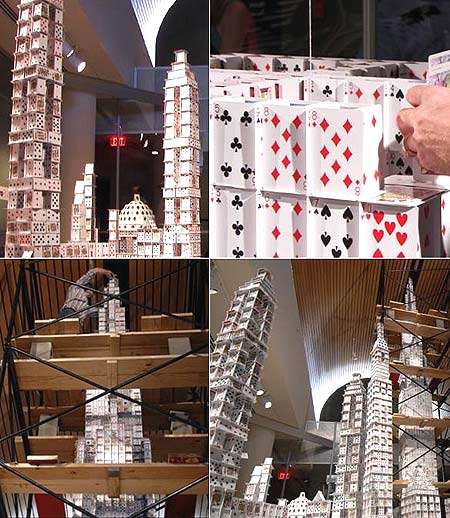John brought to the forefront a few of magic's "allied arts" in yesterday's post. Then he told you, the readers of this blog (all five of you; thanks, Mom) about products that Fun Inc. sells that relate to said allied arts. And that's swell. After all, Fun Inc. is a commercial enterprise that is in business to sell magic, so this blog is, by default, going to contain a lot of product-related information.
But now that I have the floor (The screen? The keyboard?), I'd like to remove the "pitch" from the equation and talk about allied arts that Fun Inc. does
not have a financial stake in.
1) Shadowgraphy.
The art of hand shadows is, possibly, one of the oldest and simplest forms of entertainment in the world. Imagine a cave man creating and animating shadows on the wall of his dwelling by the light of a crackling fire. That's where it started. From there, it took a long time for visionary entertainers like Felecien Trewey to turn a mere amuseument into a laugh-provoking, evocative vaudeville/music hall artform. Trewey, a Frenchman, developed a world wide reputation as a master shadowgrapher, and even toured America with the famous magician Alexander Herrmann. Other titans of magic's past with acute abilities in the hand shadow department include Okito (Theo. Bamberg), Fu Manchu (his son, David Bamberg), Max Holden (who ran a few magic shops, and wrote for
The Sphinx), and Edward Victor (who worked more steadily with his shadow act, billed as "Hand Made Humor" than he did as a magician).
Currently, there are perhaps less than 25 professional shadowists in the world. The one that immediately comes to mind is Ray Crowe, who recently appeared on Late Night with David Letterman, and on the cover of
MAGIC Magazine. Others that I've seen recently include Marcelo Contento, Sonny Fontana, and Hans Davis.
2) Troublewit.
In C. Lang Neil's seminal text,
The Modern Conjurer, in the back of the book, right next to photos of Trewey performing hand shadows, is a chapter on "The Art of Paper Folding," commonly known as Troublewit. Though seldome seen today, this variety art was popular a generation ago, and became a staple of Jay Marshall's act, along with other magicians like Ellis Stanyon (who published an informative instruction book on how to present the Troublewit). While I have seen several hand shadow acts in the last ten years (as noted above), the only entertainer I have seen perform Troublewit was Jay Marshall. This is not to say that no one performs it any more, but that it is a variety spot seldom seen.
3) Chapeaugraphy.
As legend has it, the practice of forming 25 different hats with a simple ring of black felt was a French creation, developed by Mons. Tabarin. Scant information on Tabarin's life has been recorded.
As with shadowgraphs, it was Felecien Trewey who elevated this diversion to that of a fascinating, theatrical turn. Like hand shadows, Trewey posed for a series of photographs explaining the different characters he portrayed in his Chapeaugraphy routine in
The Modern Conjurer (a book now sadly out of print).
Other magicians who performed the Chapeau routine successfully and continually include Percy Abbott, Eugene Laurant, Dana Walden, Frances Marshall (whose routine using two hats was available from Magic, Inc. for a time), Jay Marshall (again) and, currently, Harry Anderson, and Junge-Junge (under a different name, which escapes me now). James Hodges, the illustrator/author behind
Sexy Magic, recently explored modern variations on the Chapeaugraphy act in a serialized column in
Genii. He has also written an entire book on the subject.
Perhaps one reason that Chapeaugraphy is seldom seen today is due to the fact that many of the characters portrayed in the typical routine with the felt brim were common caricatured stereotypes of ethic groups that, today, would be considered politically incorrect.
So, what's the take-away from the above paragraphs of perhaps interesting, semi-arcane information?
To my mind, it offers not only a window in to the recent and all-too-quickly forgotten past of the variety arts, but also offers the cunning, resouceful and ambitious entertainer an opportunity to do some reasearch and rehearsal and in the process, develop a unique entertaining "turn" (as they used to call them) virtually unknown to modern audiences.
Take Ray Crowe's success with his hand shadow act as a cue (his video has received over 1 Million hits alone!). With the right spin, you can develop a carefully crafted performance of one of these virtually unknown allied arts and make headlines.
 Yes, after much intense lobbying, I managed to convince Justin Robert Young of iTricks to have us back on the podcast!
Yes, after much intense lobbying, I managed to convince Justin Robert Young of iTricks to have us back on the podcast!






